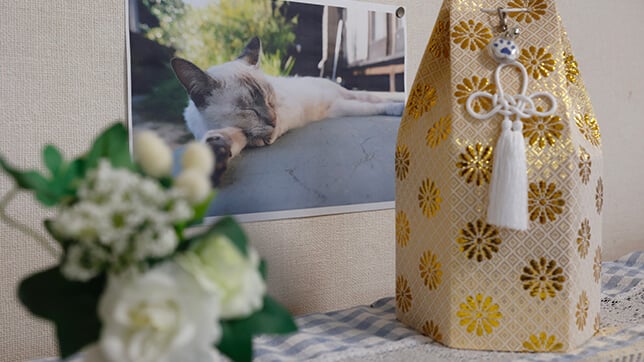3rd October 2024
Understanding the different stages of pet loss grief
While society may not yet regard the experience similar to losing a human loved one, the loss of a pet leads us to endure the same grieving process. After all, our dogs, cats, and horses become valued members of our families, so it’s natural for their passing to have a devastating impact on us.
Sometimes, understanding the stages of grief can help to make sense of confusing or overpowering emotions. However, it’s important to remember that you’re a unique individual with your own life experiences and there might be other factors in your life that affect how you grieve.
So, please don’t be concerned if your experience of grief is different to someone else’s – just make sure you reach out for support, if needed.
What are the stages of pet loss grief?
The stages of pet loss grief are applicable to the passing of a dog, cat, horse, or any other animal who means the world to you.
Please note: Pet loss grief affects everyone differently – especially since the individual circumstances surrounding each loss will differ – meaning you may not experience stages in the order or intensity listed below.
Stage 1 – Denial
This stage of the pet loss grieving process could involve feelings such as:
- Shock.
- Disbelief.
- Panic.
- Confusion.
You might feel unable to comprehend what’s happened and/or find it difficult to accept your loved one is no longer around.
Stage 2 – Anger
During this stage of the grieving process, you’re likely to experience:
- A sense of guilt.
- Self-blame.
- Blaming others.
- Feelings of hostility.
- Frustration.
Although it can feel tempting to keep your feelings to yourself during this phase of the grieving process, it’s vital to speak to someone if your emotions are overwhelming.
Stage 3 – Bargaining
At this stage of the grieving process, you may begin to assess what could have been done to prevent the outcome or bargaining with external forces to find relief. (For example, someone who is religious might pray for signs to help them through their grief.)
During this stage, you could struggle with feelings of guilt and helplessness.
Stage 4 – Depression
Throughout this stage of the grieving process, the feelings you might have include:
- Tiredness.
- Hopelessness.
- Isolation.
It’s also normal to lose perspective and want to be around others as you work through this stage of the grieving process.
Stage 5 – Acceptance
Once you’re ready to acknowledge the loss of your loved one, you’re finally in a place from which to move forward with your life.
However, acceptance doesn’t mean you feel positively about the situation, or that it’s any easier to navigate life without your beloved dog, cat, or horse.
‘Acceptance’ describes the way you’re able to face your day without the looming emotional pressure of depression, anger, or denial.
If you’re ready, you could start to consider ways to remember your pet or giving back to animals in memory of your pet at this stage of the grieving process.
How to deal with pet loss grief
Many of us, here at Animal Friends, have been through pet loss grief ourselves – so we understand how difficult it is to cope with bereavement. That’s why we’re sharing some advice that we hope will support you to get through each stage of the grieving process as best you can…
Accept that grief isn’t linear
Despite describing the process of grief as occurring in ‘stages’, that doesn’t mean you’ll experience each aspect of grief in the order listed above.
In fact, it’s completely normal to take a step back or to skip entire stages of the grieving process.
By accepting that grief doesn’t happen in a predictable pattern, you’re empowered to manage whichever stage of grief you’re experiencing whenever it occurs.
Stay active and keep busy
You can try to counteract some of your emotional pain through exercise, thanks to the benefits it offers:
- Boosting self-esteem.
- Improving sleep quality.
- Reducing stress.
Even a gentle stroll through a local park could help you feel a little better – since spending time in nature and the fresh air is good for you, too.
Grow around your grief
Grief counsellor Dr. Lois Tonkin’s “Growing around grief” model explores the idea that grief doesn’t get smaller or less significant, but that we grow around it instead. So, ‘growing around grief’ suggests that it’s normal for some days to be tough, while other days you feel able to get on with everyday life without feeling upset.
The sadness we feel about losing a beloved dog, cat, or horse never leaves us – we just need to learn to grow our lives around that grief.
For instance, when we first lose a loved one, grief feels as though it fills every aspect of our lives. Then, as time passes, and we accept what’s happened, our day-to-day life settles into our ‘new normal’, to evolve around our loss as it becomes part of our story.

Where to access support for pet loss grief?
If you’re struggling to navigate the stages of grief alone, please visit our Pet Bereavement Hub, where you’ll find resources and contact information for organisations who can support you.
Here’s a list of places you can go to access pet bereavement support:
